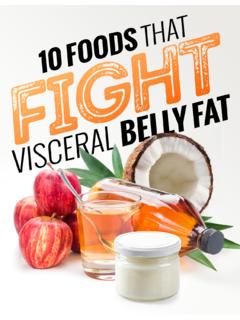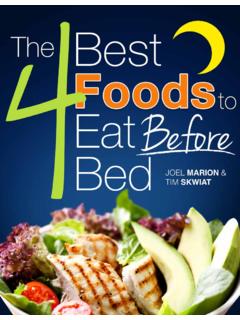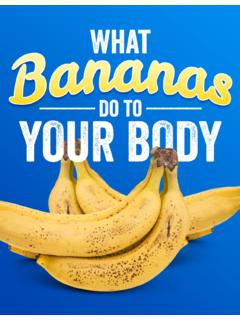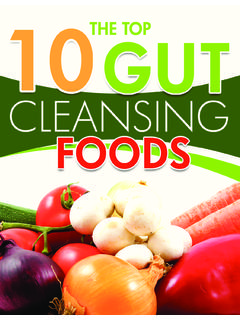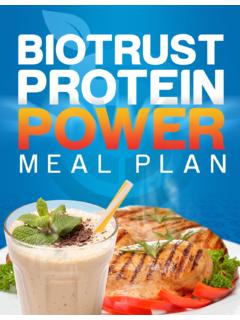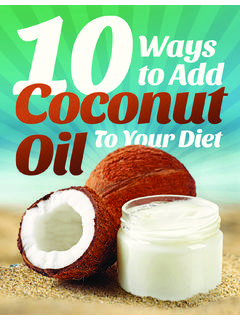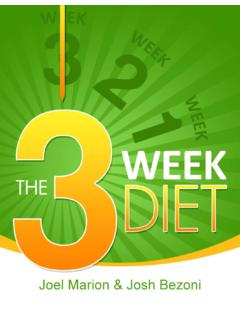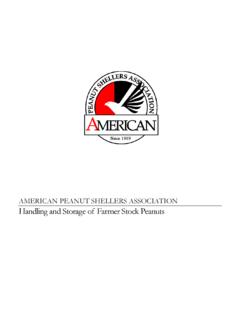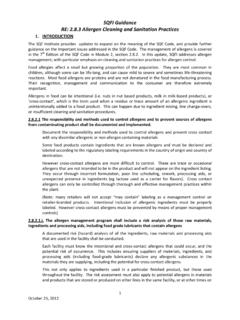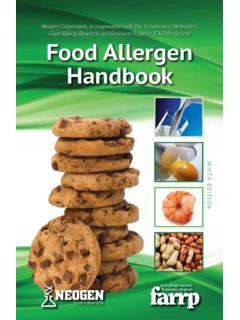Transcription of Joel Marion, CISSN & Tim Skwiat, Pn2
1 2 Joel Marion, CISSN & Tim Skwiat, Pn23 WHAT peanut BUTTER DOES TO YOUR BODYW hile nut is in the name, peanuts are technically legumes. As opposed to nuts like almonds and walnuts, which grow on trees, peanuts grow underground. Along those lines, many refer to peanuts as ground nuts. Some even refer to them as the gouber pea, ground pea, pindar nut, earth-nut, ground bean, or even goober. Regardless of what they re called, in the United States, peanuts (and peanut butter) are by far the most popular nut, comprising 67% of all nut what do peanuts do to your body? Are they healthy? Are they fattening? Here s the low-down on this and NutritionA one-ounce (1/4 cup) serving of peanuts contains: Calories: 164 Total Fat: 14go Saturated Fat: 2g Total Carbohydrate: 6go Dietary Fiber: 2go Sugars: 1g Protein: 7g Vitamins and minerals:o Copper: (47%)o Manganese: (36%)o Niacin: (28%)o Folate: (22%)4o Biotin: (21%)o Vitamin E: (20%)o Phosphorus: 137mg (20%)o Thiamin: (19%)o Magnesium: 49mg (12%)o Zinc: (6%)o Choline: definition, peanuts are technically a good source of protein, providing 10% of the Reference Daily Intake (RDI) per serving.
2 However, research shows quite clearly and conclusively that the RDI for protein (64 grams per day) is far from optimal. In fact, 2 3 times that amount may be best for reducing body fat, increasing lean body mass, improving appetite control, improving performance, and supporting overall health. Beyond that, peanuts are not a complete source of protein, as it doesn t contain all the essential amino acids ( , methionine). That doesn t make peanuts bad ; rather, it s simply to state that it s not a great idea to rely on them for their protein content. After all, there are far more protein-dense, higher quality sources of protein. Having said that, peanuts contain more protein than any other 77% of calories coming from fat, peanuts are a high-fat, calorie-dense food.
3 50% of the fat in peanuts is of the monounsaturated variety, while 32% is polyunsaturated fats, nearly all of which are omega-6 fatty acids. Hang on to that, as we ll be coming back to that Beyond the Nutrition FactsWhile peanuts are often recognized for their fat, protein, and vitamin E content, there s more to this legumes story than can be found above. Believe it or not, peanuts contain the antioxidant resveratrol, which is commonly associated with red wine and the skin of red Resveratrol, which belongs to a category of polyphenols called stilbenoids, is produced by the peanut plant when exposed to stress ( , infected by a microbial pathogen). peanut stilbenoids have been considered the major sustaining factor of the plant s resistance to health benefits of resveratrol may be many and have been well-established.
4 A number of studies have demonstrated the anti-inflammatory activity of resveratrol and its ability to promote a healthy inflammatory Resveratrol has also been purported to prevent obesity, and several studies have demonstrated the anti-obesity super powers of this polyphenol. For instance, research has shown that resveratrol decreases the synthesis of fat and reduces the uptake of fat by the body s fat cells. In addition, resveratrol increases the body s ability to burn fat for fuel (in the muscles and liver).4 Interestingly, resveratrol has been shown to brown white adipose tissue ( , body fat), and along these lines, it also seems to increase metabolic rate and calorie expenditure via activation of brown adipose tissue (BAT) thermogenesis.
5 Simply put, BAT is unique in that it burns body fat to produce heat ( , thermogenesis), and as a result, BAT thermogenesis is currently being investigated as an anti-obesity ,6It may also come as a surprise that peanuts have a higher polyphenol (a category of plant-based antioxidants that includes stilbenes) content than almonds, Brazil nuts, cashews, macadamia nuts, and pine nuts. What s more, peanuts have a higher total antioxidant capacity than Brazil nuts, cashews, macadamias, and pine Butter Not Just PeanutsIf you ve ever taken time to review the ingredients and nutrition information on the various containers of peanut butter, you already know that, while mostly peanuts, peanut butter can be much more than that.
6 Of course, there are a few brands that only contain peanuts, but those are few and far peanut butter, particularly the popular brands, contain peanuts along with the addition of sugar, fat, and salt. This is critical to highlight. No, it s not that the amount of added sugar is going to make you fat. No, it s not that the amount of salt is necessarily a threat to cardiovascular wellness. No, it s not that the amount of added poor-quality fat is enough to ravage your health (unless it s partially hydrogenated oil; more on that below). Rather, it s because this trio of ingredients, provided in precise amounts, that are known 6as the three pillars of processed foods. 8 In his book Sugar Salt Fat: How the Food Giants Hooked Us, Pulitzer Prize-winning investigative journalist for the New York Times Michael Moss discusses how food manufacturers rely on salt, sugar, and fat to override our dietary self-control through foods so perfectly engineered to compel overconsumption.
7 With sugar and fat intake, brain pleasure centers light up in functional magnetic resonance imaging studies just as they would with an addictive drug, such as cocaine. Increasing the amount of sugar intake leads to a bliss point of maximum taste satisfaction, disposing you to crave sugar in a virtual addiction, Moss describes. Moss stresses that fat is an energy colossus. It packs 9 calories into each gram, more than twice the caloric load of either sugar or protein . For fat, instead of a bliss point, there is a quite potent mouthfeel (dryness, gumminess, and moisture release). That is, adding fat drives consumption for a number of reasons. On one hand, from an evolutionary standpoint, the body is designed to seek out calorie-dense foods.
8 On the other hand, adding fat to processed foods enhances sensory characteristics like mouthfeel, texture, and overall tastiness of foods. Simply put, adding fat to foods makes them more it comes to salt, says Moss, the food processing industry is completely hooked. It s a miracle ingredient that solves all their problems. On one hand, salt provides a flavor burst; on the other hand, salt serves as a preservative so foods can stay on the shelves for months. It also has the capability to mask off-notes in flavors that are not inherent to processed foods. Like sugar, salt has addictive qualities. 8 Ask yourself this: Have you ever found that it s incredibly difficult to limit portion sizes when it comes to peanut butter?
9 Better said, have you ever found that it s incredibly easy to overeat peanut butter? You wouldn t be alone if you said that you re the type of person who s been known to eat a half jar (or even an entire jar)..and still want you may not have realized is that most commercial peanut butter has the very same qualities as potato chips, pizza, French fries, and chocolate, which are commonly regarded as the most addictive line is this: If you re going to choose peanut butter, your best bet is to choose natural peanut butter with the only ingredient being peanuts NO added sugar, salt, or Butter and Trans FatsAs mentioned, peanut butter is not just peanuts, and one of the ingredients that is sometimes included is partially hydrogenated vegetable oil, which helps improve shelf-life and make peanut butter smooth and creamy.
10 Partially hydrogenated oils are the primary dietary source of trans fatty acids. Before delving into this topic further, it s far less common to see partially hydrogenated oils in peanut butter than it once was (for reasons explained below). What you re more likely to see, however, is fully hydrogenated vegetable oil, which are used for the same purpose but do not contain trans you re not completely familiar with trans fatty acids, a good starting point is the recent determination by the United States Food and Drug Administration (FDA) that partially hydrogenated oils are not safe for human Along those lines, the FDA will no longer permit the use of partially hydrogenated oils in processed foods.
